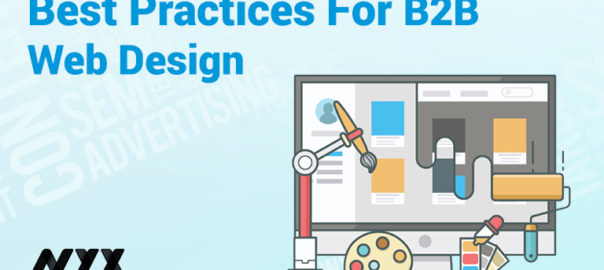The decision making and buying process of B2B web design is entirely different from that of a B2C website. B2B consumers will never buy anything out of impulse. B2B customers are making a greater investment and taking an increased risk, so they usually want to speak with a salesperson before they commit.
But that doesn’t mean that a B2B web design should just be a static brochure. Even though the website might not be involved in the drafting of a contract or the physical exchange of money, it’s still one of your best salespeople.
All B2B websites design should be focused on generating leads. Although B2B buying decisions might take anywhere from six months to two years to finalize, a sales-ready website must be set up to support that lengthy sales cycle.
The information architecture, form strategy, conversion strategy, and every other component of the web design must reflect the goals and pain points of your buyer personas, attract high-quality leads organically, and encourage those leads to move through the sales funnel on their own. Here are a few hand-picked best practices that will help you in designing amazing B2B websites.
1. Do Your Research
Before you begin to think about your website’s design, it’s imperative to do some research to ensure you stay true to your buyer personas and map your content to the buyer’s journey. Focus on meeting their needs and solving their pain points.
Often the objective of B2B web design is to attract more visitors, improve the bounce rate, or convert visitors into leads. Aligning the wants and needs of your business with the wants and needs of your customer is a great way to ensure your website is accomplishing this goal.
2. B2B Web Design: Understand Customer Needs
According to a study, seventy-six percent of B2B customers feel that the most important factor in a website’s design is the ease of use and the ability to find the required information. Before you enter your website redesign, make sure you have well-developed buyer personas, and have a good understanding of their goals and pain points to inform your strategy and planning. Knowing what your customers want and how to speak to them will help you develop an effective content outline around which you’ll structure the rest of your website.
3. Concentrate on User Experience
After you establish who you are as a brand and who you want to attract, you need to think about exactly what you want visitors to do when they get to your page. Research from the Nielsen Norman Group has shown that a mere 58 percent of B2B websites had successful user experiences.
What are your goals? Do you want your visitors to check out your products? Would you prefer they visit your blog or download a premium content offer? It’s imperative to establish your goals and the anticipated conversion paths. Laying out a wireframe for a website is the best way to define a visitor’s flow. It also helps the designer build the pages. In some cases, it might even make sense to conduct user-experience research on your wireframes. Wireframes are a critical initial step in creating a compelling user experience.
4. B2B Web Design: Think and Write Like a Human
Think of your website as part of your sales strategy and use it to introduce buyers to the solution you provide for their pain points while explaining why your business is best at providing it.
This doesn’t mean you need to cram industry jargon onto every page. Use the same vocabulary that your buyer personas use in the solutions they’re seeking. Don’t overload them with information. Instead, state what your business offers simply and clearly.
5. Ensure Good Page Load Speed
Speed matters more than ever right now. As mobile devices with poor bandwidth continue to become more popular, Google now considers page load speed as one of the most important factors in determining your search ranking — and it’s a key component in creating a stellar user experience.
Today, your website is expected to be fast, sleek, and convenient. Be mindful of the details on your website that could affect page load speed, like high-quality images and JavaScript. Think about what you can get rid of or alter to improve your page speed.
6. B2B Web Design: Engage Your Customers
Building your business and gaining trust is all about developing relationships. This can be done through content production, such as having a great blog. But effective design also plays a big role.
Use heat maps to determine information placement. Visitors use one of two distinct reading patterns when visiting websites – the F-pattern and the Z-pattern. By tailoring your content placement and structure to these two patterns, you can be sure that the most important information is being conveyed clearly.
Focus on a minimalist design to create an uncluttered, easily navigable experience. Ensure your CTAs across the site are using consistent color and design. Highlight social engagement – sharing and responding to your content not only encourages engagement, but it also boosts your page rank and increases your market reach.
7. Present Consistent Branding
One of the most important pieces of building effective user experience and building trust is presenting a consistent branding. It’s advisable to have a style guide for your business. Style guides touch on all aspects of your brand and establish a precedent for color management, images, fonts, logo use, voice, and tone. Before you begin developing your website, writing your blog, or even making social posts, it’s not a bad idea to establish a simple style guide.
In the past, B2B websites were online brochures, built to look good and nothing else. But as B2B buyers, search engines and the web have evolved, this approach has become obsolete. Today, your B2B is your best salesperson. You need to make sure that it provides a good first impression and that it continues to offer seamless, satisfying experiences to your prospects and customers in the long term. Want to discuss more on B2B web design? Talk to our experts.
Want to know the difference between B2B and B2C? Click here



